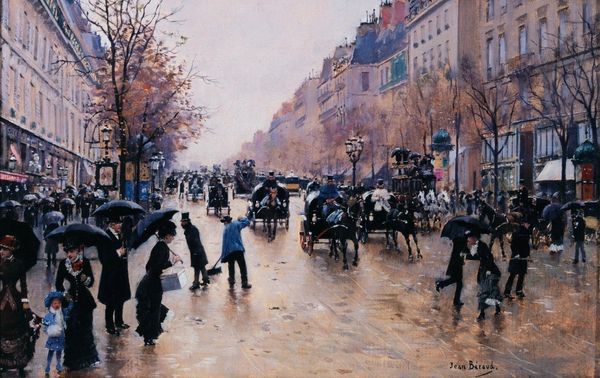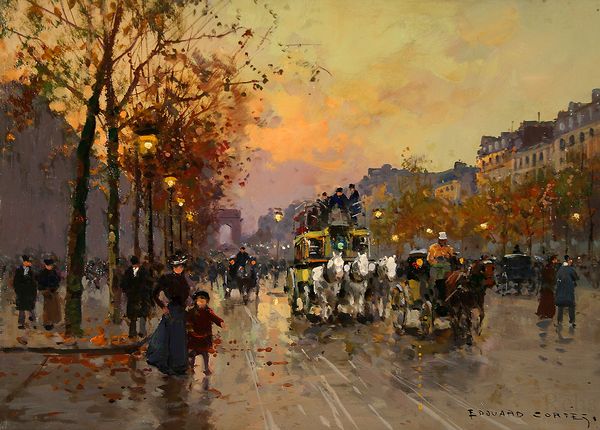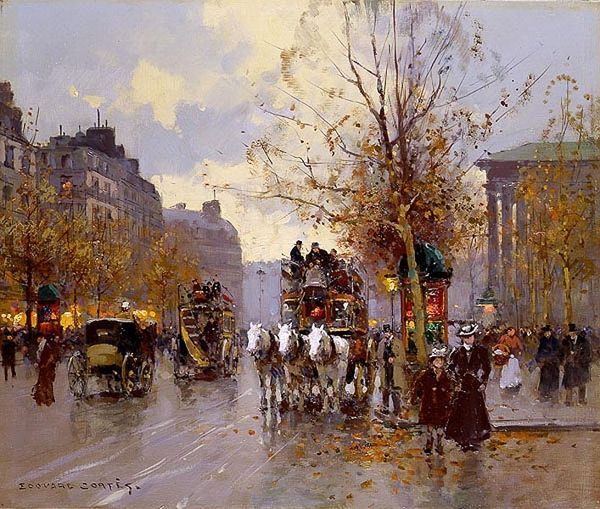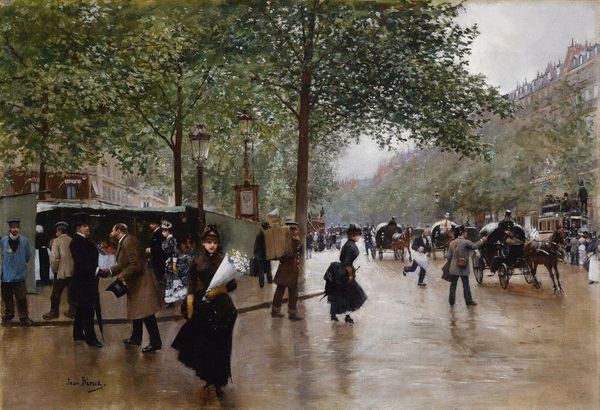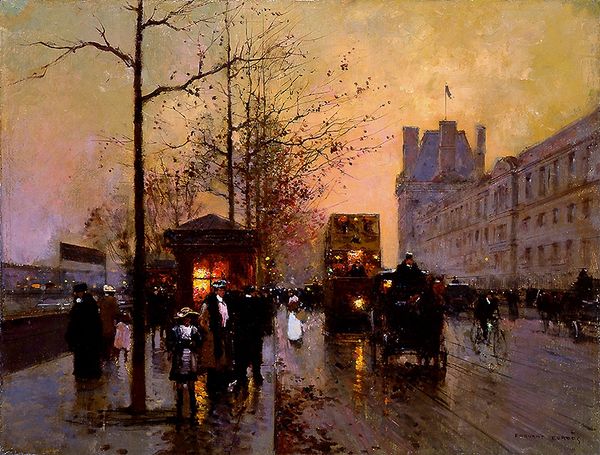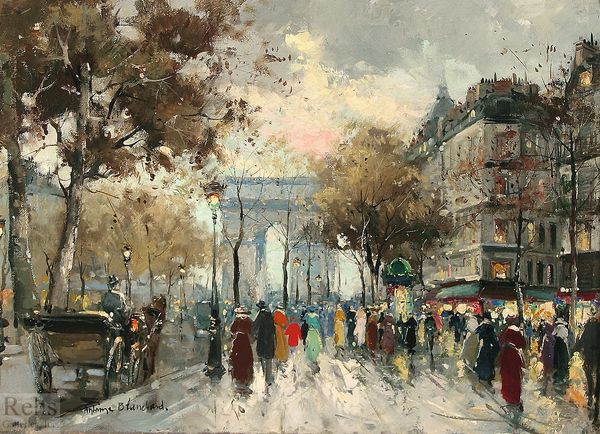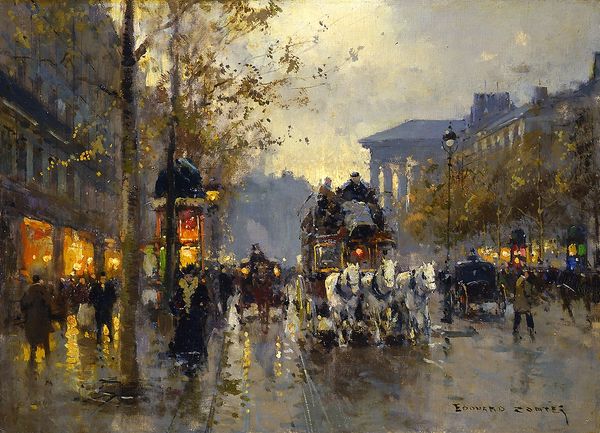
painting, oil-paint
#
flâneur
#
painting
#
impressionism
#
oil-paint
#
landscape
#
oil painting
#
cityscape
#
genre-painting
#
realism
Copyright: Public Domain: Artvee
Curator: Before us is Jean Béraud's "Boulevard Poissonnière en automne," an oil painting that captures a moment in the everyday life of late 19th-century Paris. Editor: It feels melancholic. The muted browns and greys, the umbrellas... it all points to a specific kind of urban sadness, doesn’t it? Curator: Certainly. It speaks volumes about the realities of urban existence at the time, especially considering Béraud's flâneurial perspective, almost anthropological in nature. Consider the figures—the class differences evident in their attire, their interactions... Editor: The material reality is also quite striking. The way the rain slicks the cobblestones, the weight of those wet wool garments everyone’s wearing…You can almost feel the chill. Curator: Yes, and the carriages also emphasize production means of this late industrial era. I'm curious about the relationship between man, nature, and capital as they intermingle on this street. Editor: Look at how the street cleaner's presence almost becomes performative in this context, with horse-drawn carriages alongside pedestrians traversing their route along the boulevard, their clothing signaling distinct positions within the social structure, and each engaging with material goods reflective of Paris at this time. Curator: Precisely! There is even that contrast between labor, embodied by that street cleaner diligently sweeping, and the leisure class being chauffeured in those carriages. Béraud shows us those clear hierarchies inherent in the city's design and functionality. Editor: And how that scene emphasizes the very physical aspect of modernizing urban landscapes. The painting captures an environment altered by labor and consumption, displaying signs of social differentiation in materials ranging from cobblestones underfoot to those tailored wool suits. Curator: Studying paintings like "Boulevard Poissonnière en automne" provides valuable perspectives on the intersections of gender, class, and urbanization during the era. Editor: I think this offers an immersive glimpse into daily life defined by interactions with material and social reality; Béraud’s work creates the sense of an ongoing narrative still relevant today.
Comments
No comments
Be the first to comment and join the conversation on the ultimate creative platform.
